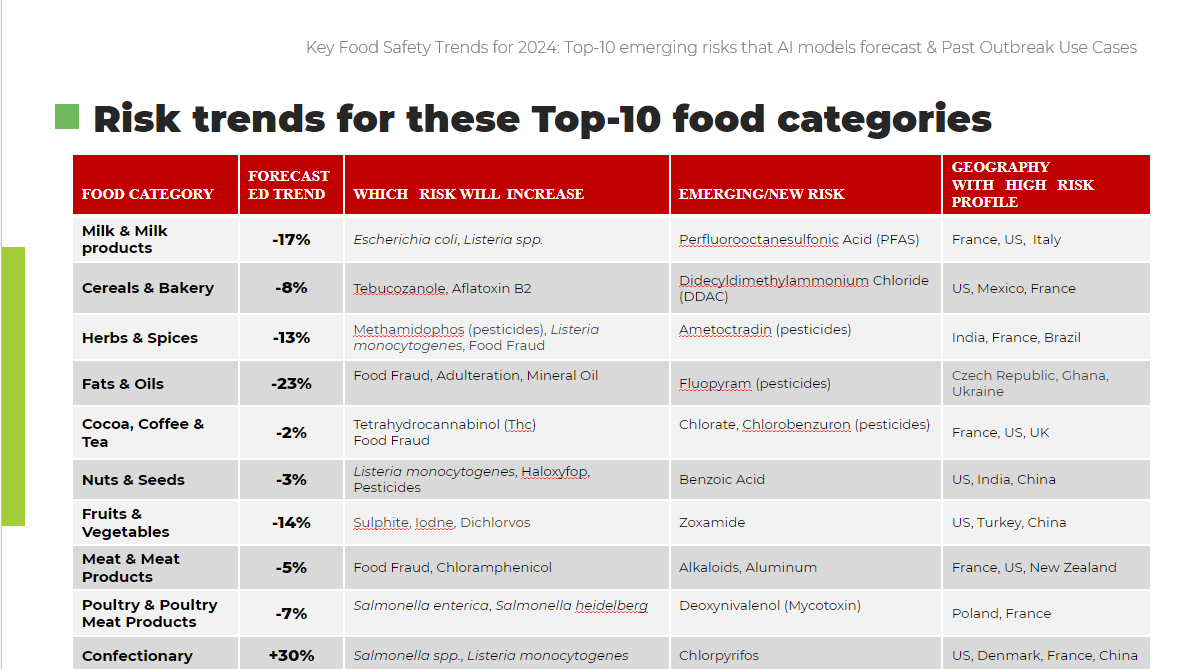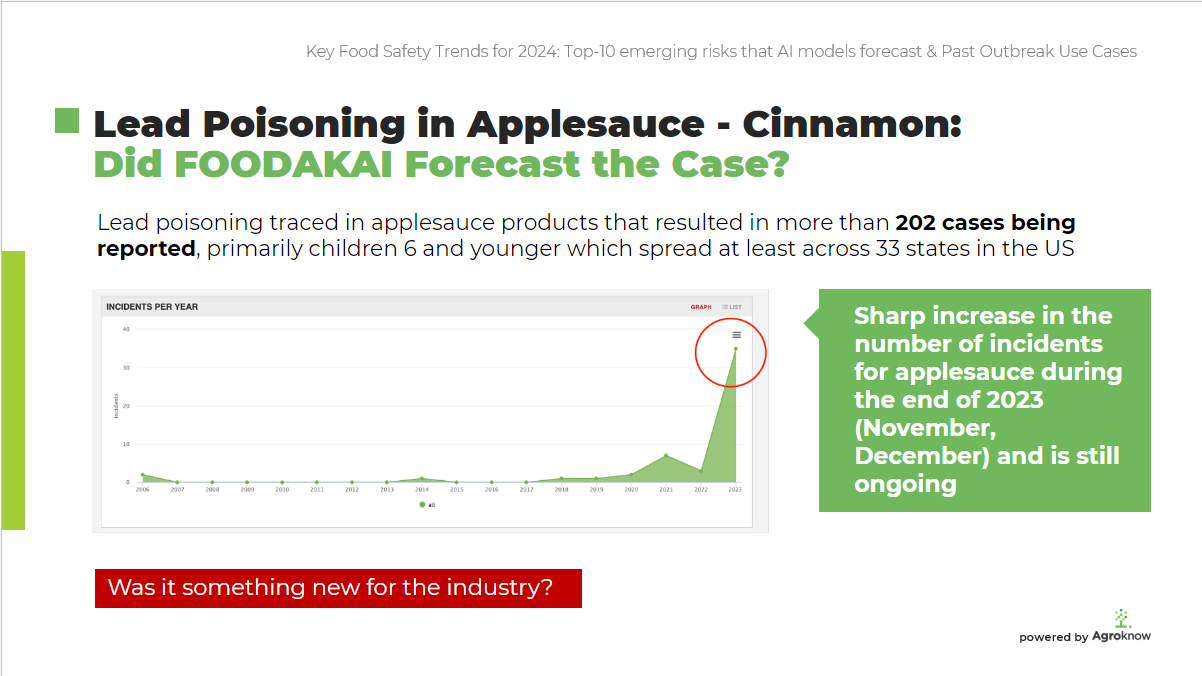
Webinar Key Food Safety Trends for 2024: Top-10 emerging risks that AI models forecast & Past Outbreak Use Cases
Last week, Chris Eliott, Professor of Food Safety and Microbiology at Queen's University Belfast, in partnership with Agroknow and FOODAKAI hosted an insightful webinar on the Key Food Safety Trends for 2024.
The webinar’s host joined Sara Mortimore, former Global VP of Food Safety at Walmart, and Giannis (John) Stoitsis, CTO of Agroknow, in discussion about key industry trends, top 10 food product forecasting trends, early warning use case on past outbreaks.
Among the topics that were discussed were:
- How forecasting is performed
- Performance review of 2023’s forecasts
- Highlights of the 2024 incident trend forecasts with an in-depth look in 3 Product Categories
- Uses Cases of how forecasting could have provided early warning signs for Outbreak in 2023
- Expert reflections on the applicability of such forecasts for food & beverage companies
Key Takeaways
Over the 1-hour discussion the webinar panelists went over the most prominent trends about food safety in 2024, reviewed the performance of past forecast, answered questions from the audience and reflected on how forecasting can increase the effectiveness of proactive food safety measures.

Here are a few highlights:
- In 6 out of 10 food categories, FOODAKAI’s models correctly forecasted the trend of incidents for 2023.
- The Increased focus on toxicological hazards – soil related heavy metals (rice, cocoa, spices, kale etc.), and man-made such as PFAS, micro and nano plastics
- The Increased drive for transparency and enhanced traceability capability – e.g. FSMA 204 in the USA
- 45% of the webinar’s audience voted that forecasting would help them understanding increasing risk at their supply chain
- The continued innovation regarding plant-based foods – not well regulated and many risks such as allergens & mycotoxin/pesticide exposure
- Increased risk of pesticide uses for various food product categories including Herbs & Spices, Fats & Oils, Cocoa, Coffee & Tea, and Confectionary for 2024
- The increased risk of toxicological hazards vs the lack of dedicated personnel in food& beverage companies.
- 63% of the webinar's audience voted forecasting could inform their strategic operations by enabling them to communicate risk throughout the organisation.
- Forecasting tools as validation for food safety professionals well as to include in their programs and promote trust in AI.
- Lead poisoning in cinnamon use case: with such information food & beverage companies could have known where to pay attention, looked more closely at the ingredient's origins, and supplier knowledge and oversight, including surveillance testing.
Lead poisoning in Applesauce products: FOODAKAI’s early warning signs could have helped anticipate them
Lead poisoning traced in applesauce products that resulted in more than 202 cases being reported, primarily children 6 and younger which spread at least across 33 states in the US.

FOODAKAI highlighted:
- Sharp increase in the number of incidents for applesauce during the end of 2023 (November, December)
- Several food safety incidents & testing results about lead in cinnamon were reported from 2017 by the authorities over the last years.
- 6 months before the outbreak, FOODAKAI was highlighting heavy metals and specifically lead as an emerging new risk for cinnamon
Verdict: FOODAKAI forecasted the trend of this emerging issue
Watch the full recording here.
Discover Food Safety Trends & Forecasts for your supply chain in a dedicated session








